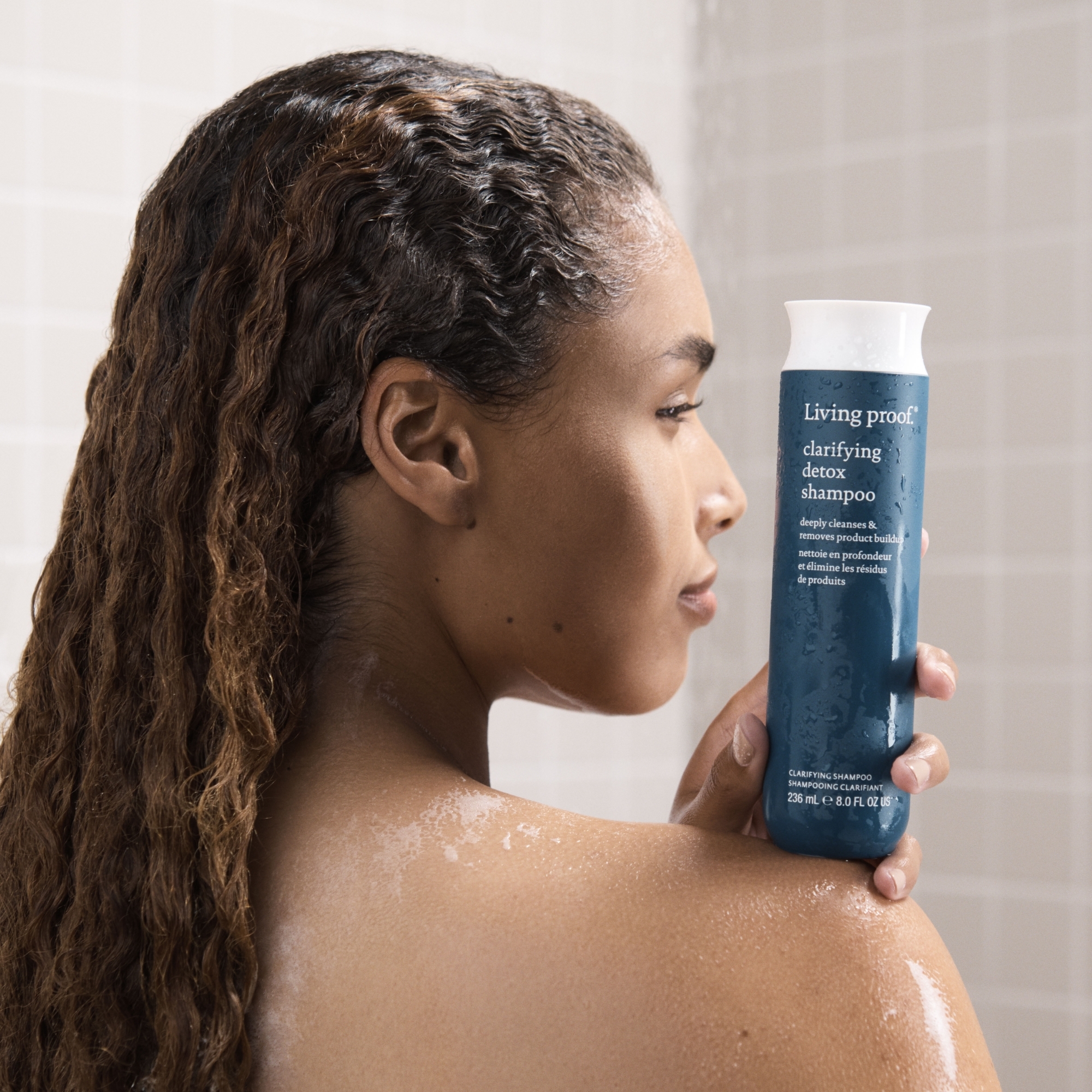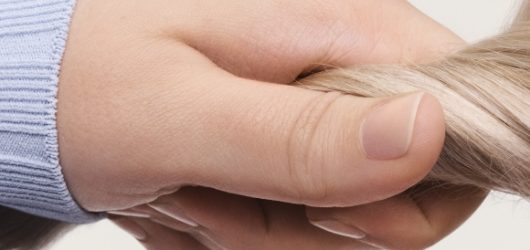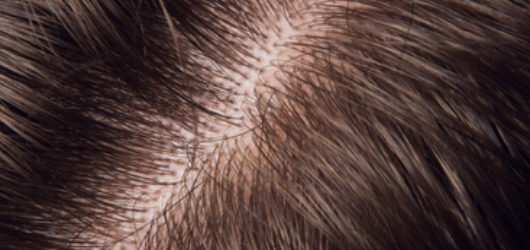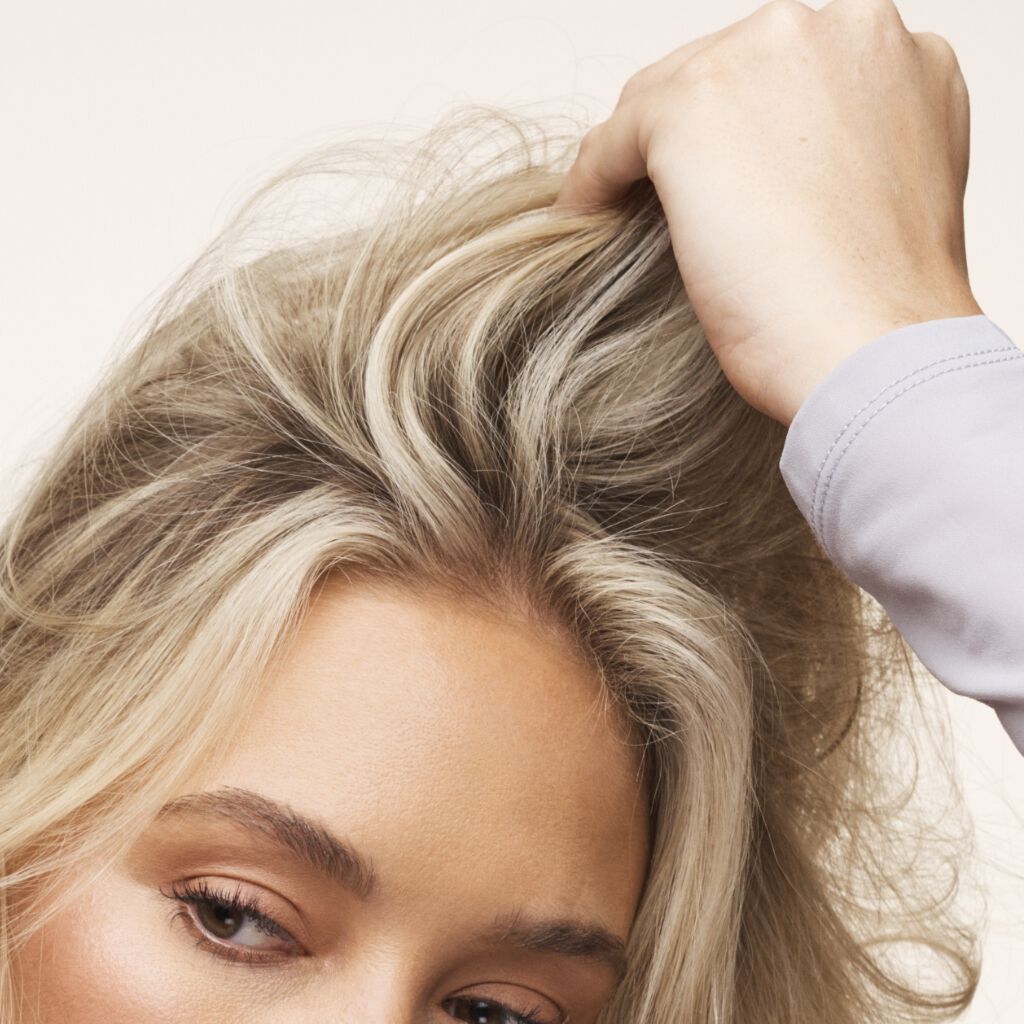
101 Guide: Protein Overload in Hair
Your entire body is made up of protein—your muscles, your bones, your skin—even your hair.1 While protein can help maintain your mane’s natural shine and volume, there is such a thing as too much, which can sometimes result in protein overload.
But, what is protein overload in hair?
In short, it’s when your hair is coated with excessive amounts of protein, hindering its quality and appearance.
If you suspect your strands could be suffering from an abundance of protein—no need to worry. Below, we’ll provide a protein overload 101, including a breakdown of what it is, what signs to look for, and how to fix protein overload in hair.
What Does Protein Overload Mean?
When it comes to your hair, protein overload refers to the buildup of the protein and keratin in the cortex of your hair’s individual strands. Usually, keratin is responsible for keeping your hair cuticle layers and follicles healthy and strong. However, too much of it can cause the buildup of excess protein on the outer layer of your hair, resulting in the opposite of its intended effect: dry hair, brittle hair texture, and potential hair breakage.
What Causes Protein Overload?
Protein overload is often caused by the products you use in your hair.2 Shampoos, conditioners, hair protein treatments, and other styling products that contain a large amount of hair protein are typically the culprit. They can disrupt your natural hair’s moisture balance.
The hair type most prone to hair protein overload is low porosity hair. This means that the hair structure cannot easily absorb moisture.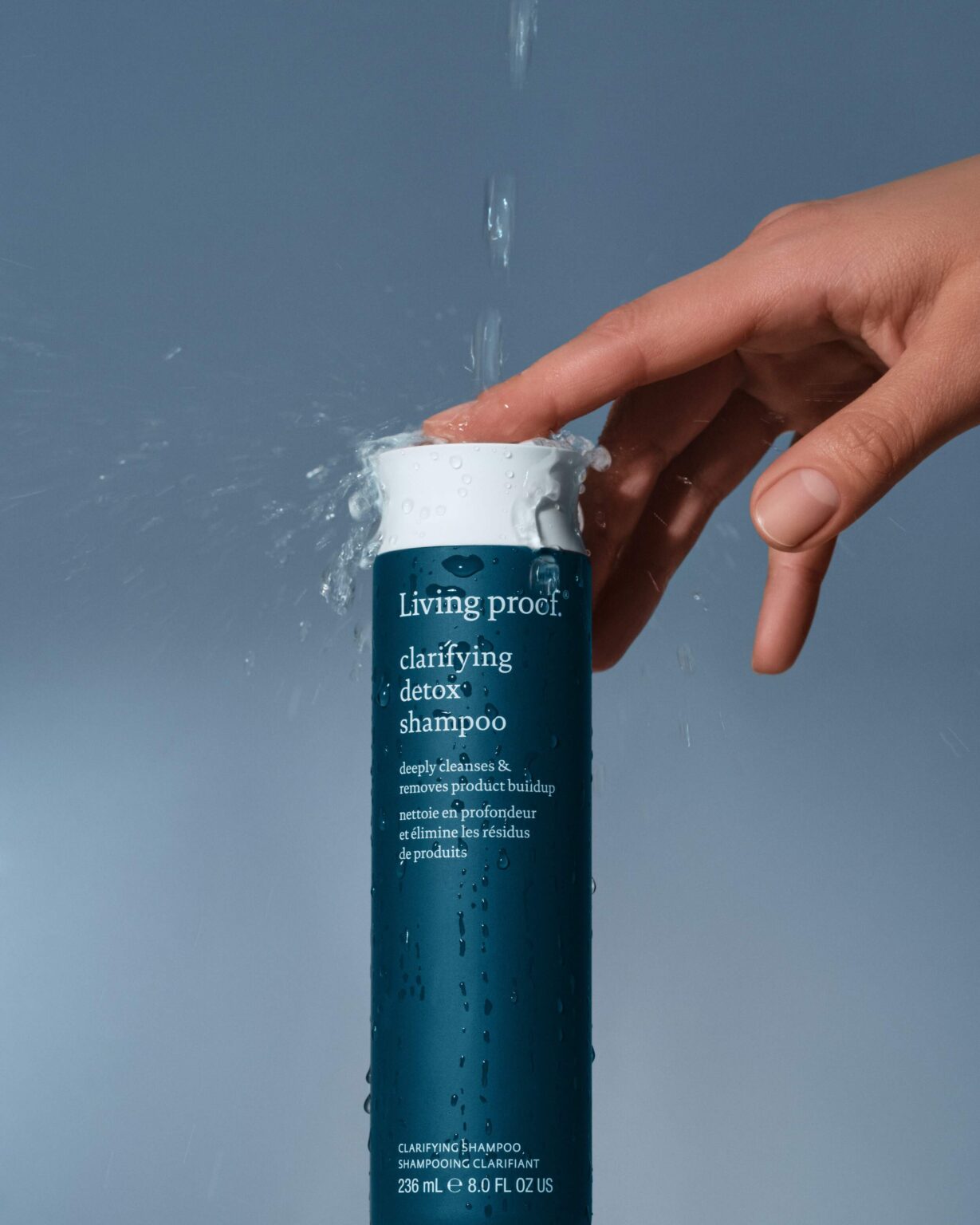
How to Tell if Your Hair Has Too Much Protein
If you’re wondering whether your hair has protein overload, keep an eye out for the following signs of protein overload in hair:
- Split ends
- Brittle hair that snaps off easily
- Hair that feels limp and lifeless
The signs of hair protein overload may be similar to that of hair that’s been damaged by chemicals and heat styling. So, if you notice any of the symptoms above, you might be able to distinguish whether it’s protein overload by investigating the haircare products you use.
Check your go-to hair product labels for ingredients like “silk protein,””hydrolyzed protein,” or “hydrolyzed collagen.” If you notice either of them in one (or more) of your products, try not to overuse these types of products to help prevent protein overload in your hair.2
Treating Protein Overload
When it comes to handling hair protein overload, you can treat your tresses from the comfort of your own home (and possibly a salon). Although the changes may not occur overnight, you can expect to see noticeable improvements by incorporating a few adjustments to your haircare routine.
From swapping out a handful of hair products to finding a moisturizer that suits your needs, let’s explore a few ways of restoring your hair to the locks you’ve been missing.
 Add a Clarifying Product to Your Wash-Day Routine
Add a Clarifying Product to Your Wash-Day Routine
On the days you wash your hair, opt for a hair clarifying detox shampoo. The ingredients present in this type of hair product can aid in stripping away the excess keratin on your strands.
For a detoxing product that’s helpful—not harmful—try a hair chelating shampoo. This type of shampoo can help remove excess protein buildup, but it’s also gentle enough not to strip your strands of their much-needed hair oils.
Moisturize
After knocking down the stubborn walls of protein with a clarifying shampoo, you’ll need to rebuild them with a soft touch of moisturization. We recommend trying out one of the following moisturizing treatments:
- Hair mask – After washing your hair, you can apply a deep conditioning hair mask to repair damage, restore your hair’s moisture levels, and help your hair stay cleaner for longer.
- Leave-in conditioner – After towel-drying your hair, a smoothing leave in conditioner can provide you with an extra boost of moisture to nourish and condition your strands.
Just remember that less is more—especially when it comes to cases of protein overload. Try using a hair mask in lieu of a conditioner once or twice a week.
Avoid Products with High Protein
When you begin your search for new haircare products, read the ingredient list to check if they have protein-heavy ingredients. While you can still use products with proteins in them, be sure to use them as instructed and try not to overlap them with other products that are high in protein. Products with collagen and silk proteins can improve your strands’ strength as long as you don’t overuse them. Overuse has the potential to leave you with dry, lackluster hair.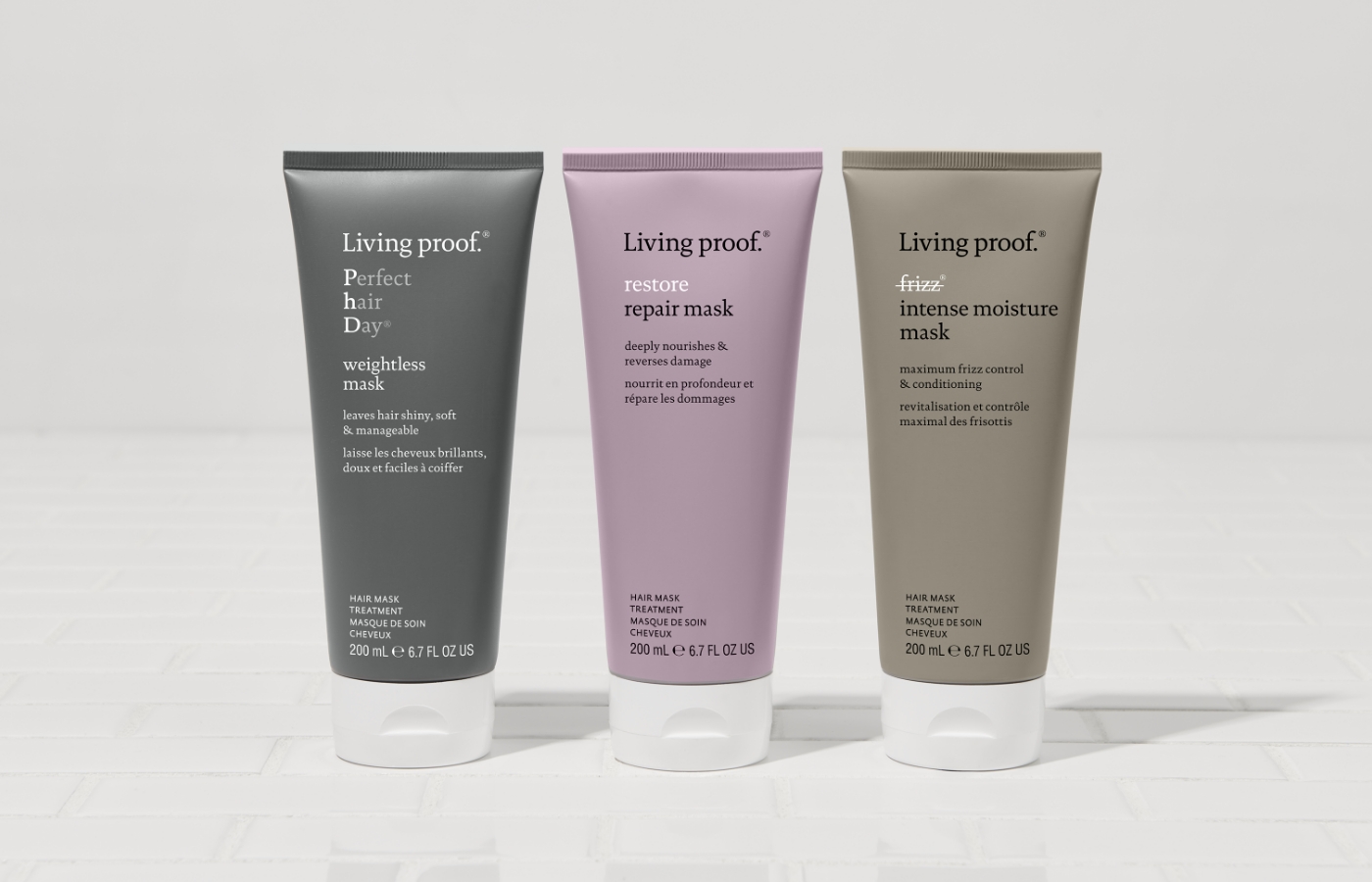
Preventing Protein Overload
Whether you’re looking for ways to avoid experiencing protein overload for the first or second time, here are a few tips to keep in mind:
- Use products with keratin as directed, and avoid layering multiple keratin products on top of one another.
- Visit your stylist regularly so they can offer feedback and suggestions regarding the quality of your hair.
Maintain Your Hair’s Protein Balance with Living Proof
Whether you find yourself with protein-packed tresses or you’re simply looking for ways to up your haircare game, you deserve healthy hair that’s full, smooth, and soft.
Living Proof offers an array of science-backed haircare products online created to help you attain your loftiest hair goals. From our gentle Clarifying Detox Shampoo to our Repair Leave-In Conditioner, you can find the ultimate tools to stock your haircare arsenal and rid your hair of protein overload once and for all. If you’re looking for hair strengthener treatments, try our Triple Bond Complex to help prevent damage, all while smoothening and strengthening your strands.
If you’re curious about what other products can help your hair type, take our hair quiz to customize the best hair routine for you.
- Harvard. Protein. https://www.hsph.harvard.edu/nutritionsource/what-should-you-eat/protein/
- Healthline. Can You Have Too Much Protein in Your Hair? https://www.healthline.com/health/beauty-skin-care/too-much-protein-in-hair#appearance

